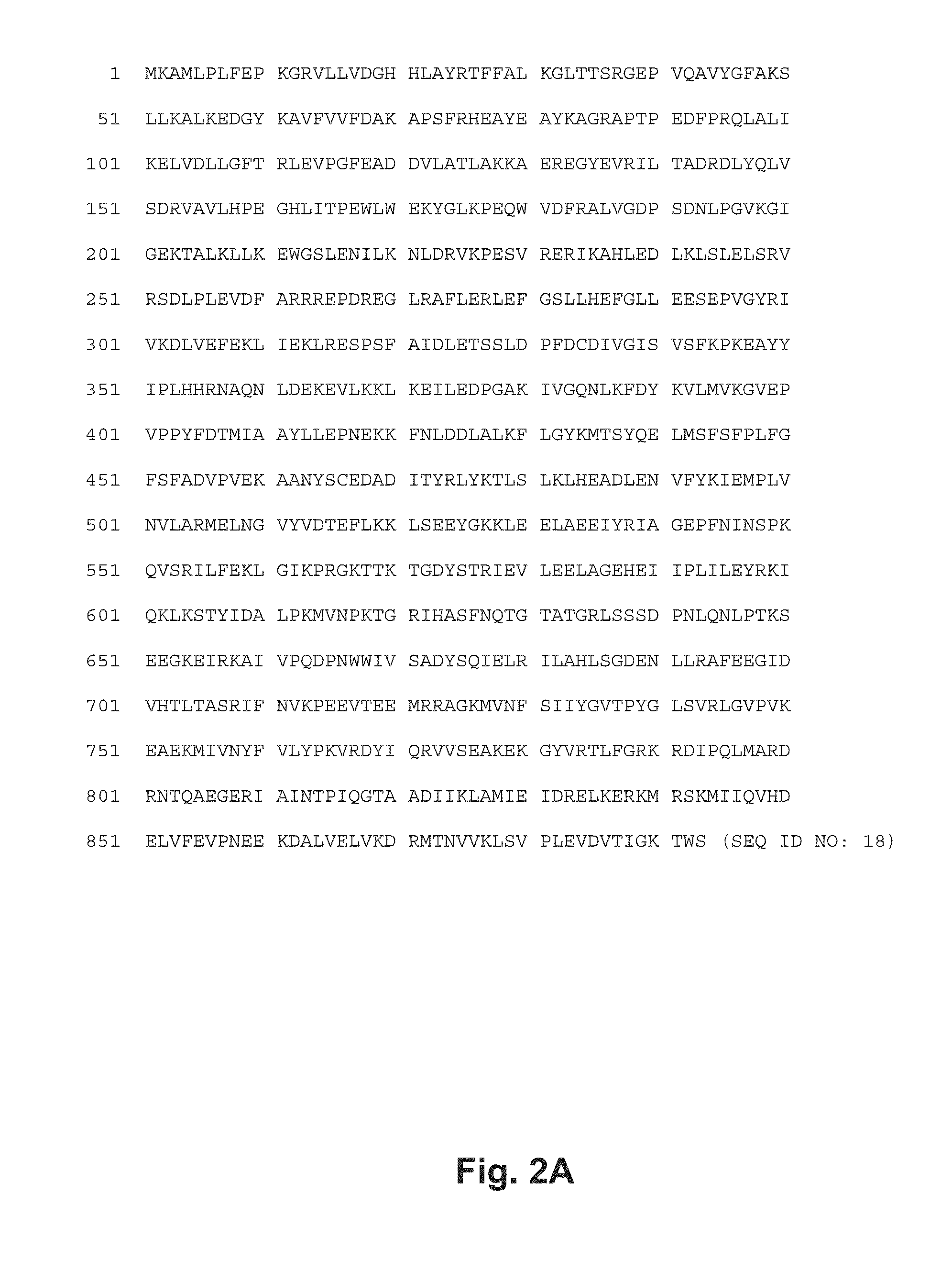DNA polymerases and related methods
a polymerase and polymerase technology, applied in the field of dna polymerases, can solve the problem of difficult detection of the presence of a target nucleic acid sequence without amplification, and achieve the effect of improving reverse transcription efficiency and improving reverse transcription efficiency
- Summary
- Abstract
- Description
- Claims
- Application Information
AI Technical Summary
Benefits of technology
Problems solved by technology
Method used
Image
Examples
examples
[0195]It is understood that the examples and embodiments described herein are for illustrative purposes only and are not intended to limit the scope of the claimed invention. It is also understood that various modifications or changes in light the examples and embodiments described herein will be suggested to persons skilled in the art and are to be included within the spirit and purview of this application and scope of the appended claims.
example i
Identification and Characterization of Mutant DNA Polymerases with Improved Enzyme Activity
[0196]Mutations in CS family polymerases were identified that provide, e.g., improved ability to extend primed DNA templates in the presence of free nucleotides. In brief, the steps in this screening process included library generation, expression and partial purification of the mutant enzymes, screening of the enzymes for the desired property, DNA sequencing, clonal purification, and further characterization of selected candidate mutants, and generation, purification, and characterization of combinations of the mutations from the selected mutants. Each of these steps is described further below.
[0197]The mutations identified by this process include S671F, D640G, Q601R, and I669F, either separately or in various combinations. These mutations were placed in several CS-family polymerases, including G46E CS5, G46E L329A CS5, G46E E678G CS5, and G46E L329A E678G CS5. Some of these mutant polymeras...
example ii
Properties of Mutants of G46E L329A E678G CS5 DNA Polymerase Under Varied Salt Concentrations
[0218]The nucleic acid extension rates of various mutants of G46E L329A E678G CS5 DNA polymerase were determined in the presence of 90% riboadenosine triphosphate (ribo ATP or rATP). The reaction mixture contained 25 mM Tricine pH 8.3, 20 mM (FIG. 4) or 60 mM (FIG. 5) KOAc, 3 mM MgCl2, 2.5% v / v Storage Buffer (50% v / v glycerol, 100 mM KCl, 20 mM Tris pH 8.0, 0.1 mM EDTA, 1 mM DTT, 0.5% Tween 20), 1% DMSO, 1× SYBR® Green I, 0.5 nM primed M13, and 5 nM enzyme. To this, nucleotides were added to a final concentration of 0.1 mM dGTP, 0.1 mM dTTP, and 0.1 mM dCTP, 0.01 mM dATP, and 0.09 mM ribo ATP. Parallel reactions containing no nucleotides were also set up. All reactions were run in quadruplicate in 20 μl volume in 384 well thermocycler plates. The extension of primed M13 template was monitored by fluorescence in a kinetic thermocycler set at 64° C., taking readings every 10 seconds. Replicat...
PUM
 Login to View More
Login to View More Abstract
Description
Claims
Application Information
 Login to View More
Login to View More - R&D
- Intellectual Property
- Life Sciences
- Materials
- Tech Scout
- Unparalleled Data Quality
- Higher Quality Content
- 60% Fewer Hallucinations
Browse by: Latest US Patents, China's latest patents, Technical Efficacy Thesaurus, Application Domain, Technology Topic, Popular Technical Reports.
© 2025 PatSnap. All rights reserved.Legal|Privacy policy|Modern Slavery Act Transparency Statement|Sitemap|About US| Contact US: help@patsnap.com



